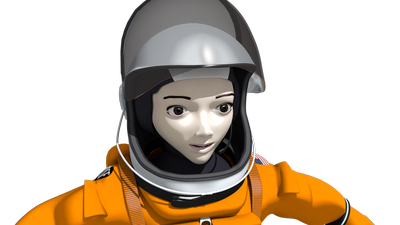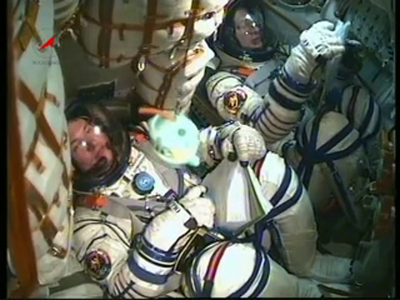Although we’re officially on a short hiatus, I am still doing a little work on weekends, and we have also recently been joined by Chris Kuhn, a very talented mechanical modeling artist who is currently working on the Soyuz launch system which features prominently in our pilot episode. I’ve also had a chance to do some more tests with character models, shading, lighting, and rendering — pictures, links, and video after the fold…
Animation and Rendering Tests
Officially, we’re taking some time off for me to finish work on Lib-Ray, but I do still have some weekend time to spend on Lunatics, and I have been getting a few things done. Here I’m going to share some of the rendering and animation tests I’ve been doing, just so you can see what’s going on. Please bear in mind that these are still very incomplete, but we are getting close to ready to do some final animation which we will use in our crowd-funding campaign, which will probably start next month.
Welcome to Chris Kuhn!
I am delighted to have the help of Chris Kuhn, who is a really talented mechanical and science-fiction modeler. His portfolio on BlendSwap is well worth your time to have a look at. He’s put a particular focus on rigging mechanical models with constraints (rather than using armatures), and he’s now working on the models for the Soyuz launch system, which plays a prominent role in our pilot episode. He has already completed the Soyuz Launch Vehicle!
Shading for Characters
Early-on in this project, I decided to go with a “non-photorealistic” look, but until now, we have not attempted to get this look in any of our renders. Last weekend, I did some experiments with adjusting the materials and shaders in our existing character models (Georgiana and Hiromi) to get a good rendered appearance. I experimented with FreeStyle and with Blender’s internal edge-rendering, but after comparing several tests, I think the unlined versions look better, although the “toon shading” produces an excellent soft feel for the characters, which I really like.
Soyuz Interior Set
I am also re-integrating the set for the Soyuz Descent Module interior set which will appear in the pilot episode. We attempted to get this set ready last Summer, but there were significant problems with combining the elements for it: scaling, file-linking, and rigging problems. The result was a set that was incomplete and not very much like the real Soyuz capsule. I’ve nearly managed to get this correct, although there are still a few problems to work out.
(Compare the above real photo to the test-render below)
As you can see, we still have some work to do to get it right (you may notice that the flight engineer’s couch is sticking into the wall!), but then, that’s why we do test rendering! It is very tight inside the real Soyuz module, so this is a very crowded set. I think that, considering that none of us has ever actually been inside a Soyuz or a trainer, and we’re doing all of this from reference photos and a few plan views (which, frustratingly, do not always show the angles we want or omit important details), that we’re not doing too badly.
Video Animation Tests: Evading the “Uncanny Valley”
An important concern for me from the beginning of this project has been “will the character animation read well enough?” Specifically, we have the combined requirements of using accurate proportions on our characters to fit the very realistic settings and a very low budget for animation. When very realistic models are animated very simply there is a creepy aesthetic effect, commonly called the “uncanny valley”, that we’d really like to avoid.
This effect is used intentionally in horror films to creep you out with dolls or zombies which look realistic, but don’t move realistically. And some computer-animated films run into this problem by accident — it can become very distracting. We obviously don’t want that. But how can we avoid it?
The effect tends to go away if either the character designs are less realistic (more cartoon-like), in which case our brains accept a higher level of interpretation and don’t expect the characters to move very accurately, OR if the movement is accurate and lifelike enough to sell the character design.
We took a very risky path with the character designs on this project, because they’re really quite close to real proportions, and as a result, I’ve been quite concerned about how this is going to read when animate. This last weekend, I finally got a chance to animate a brief sequence of facial expressions and head movements with Andrew Pray’s rigged “Georgiana” model in order to find out. I found that, actually, it’s reading pretty well — surprisingly well, really. This gives me a great deal more confidence in the feasibility of this production!
So, I’ll leave you with a brief animation test real that shows this, and also my first attempt at animating Chris’s Soyuz rocket model (this is a very rough first cut of the “pod staging” shot I have planned for the pilot, although just about everything about it needs more work):
Altogether, these last few days have gone a long way towards convincing me that this project is really going to work. In about a month, I’ll engage in convincing the rest of the world of that — or at least enough of the world to fund our production. Thank you for your continued interest and support!




